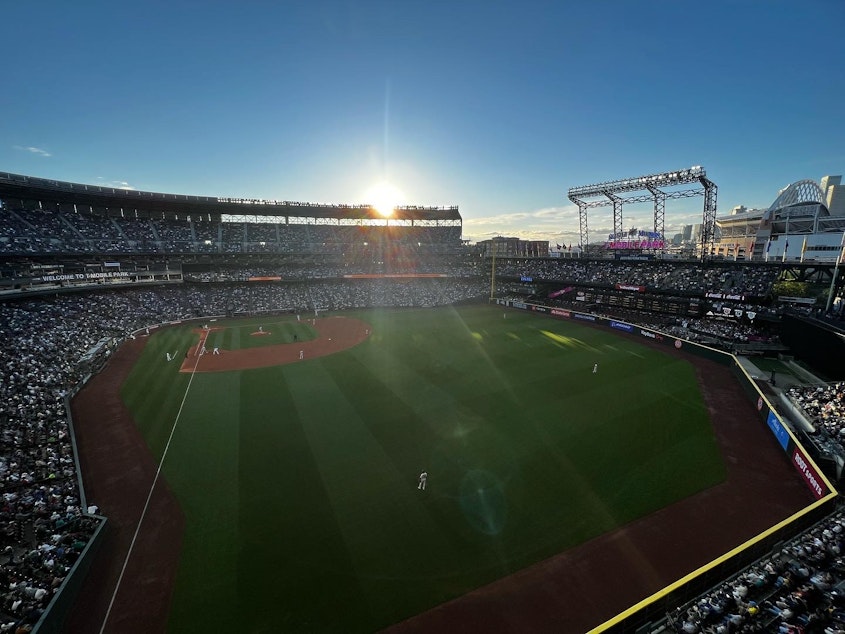Major league baseball is back — with some not so minor changes

Thursday was opening day for Major League Baseball, and the Mariners celebrated with a 3-0 late-inning win over the Cleveland Guardians at T-Mobile Park. The two teams face off again Friday night.
M’s faithful will tell you: There’s a lot to look forward to this season.
But in the off-season, some of the biggest rule changes to the game came into play. The bases themselves are three inches bigger all around. Defenses can no longer move infielders to positions statistically optimized for stopping base hits.
And probably the biggest change? A pitch clock designed to up the tempo and cut the downtime during at-bats.
Soundside spoke with John Kuehl, co-creator of Numbers Game, which makes Major League Baseball scorecards for fans.
"Something unique about baseball has always been that the length of the game is to see how long it takes to get 27 outs," said Kuehl. "That's part of what makes baseball magic in my mind."
Recent reports from the MLB show that the new pitch clock shortened spring training games by around 25 minutes. That will be a change for both hitters and pitchers, who are now penalized for not following the clock with strikes or balls.
Ultimately, Kuehl said this will be a grand experiment this season — one that will undoubtedly have hiccups and nuance to figure out. But maybe that isn't such a bad thing.
"No PR is bad PR because when it happens, the sports world will be talking about it," he said. "And maybe that's what baseball needs more than anything."
Sponsored
Dave Sims, longtime broadcaster and play-by-play caller for the Mariners, has built his career on talking about the game. He says the team is ready for whatever the shortened clock will bring — and so is he.
"You take whatever stories you have, and you get to the point quickly," he said about the truncated time between pitchers, which announcers will have to get used to now too. "You almost want to go to the punch line and live in the punch line, then take a few seconds after the next pitch to do the setup."
For example:
"Hey, we got bobblehead day coming up next Tuesday for Julio — low ball two — so make sure you get your tickets right now — and the 0-1 pitch."
Listen to the full Soundside segment by clicking "play" on the audio above.





